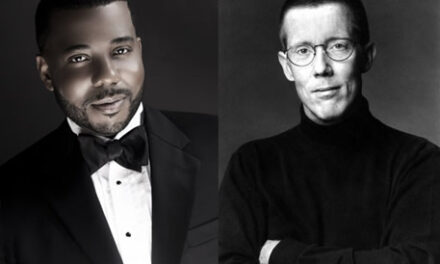There are memorable events, works of art and performances which exceed the sum of the parts which comprise them. All the parts for such an occasion were present at the joint concert of the Triad’s two professional orchestras, the Greensboro Symphony (GSO) and the Winston-Salem Symphony (WSS), offering a program which is to be performed in each city, twice, under the maestri of each respective orchestra. Each orchestra is of excellent quality, each maestro has a sterling reputation. They are joined by the combined forces of the Windows-Salem Symphony Chorale (prepared by Carole Ott) and the Choral Society of Greensboro (prepared by Jon Brotherton).
I attended the first of the four performances, in cavernous Wait Chapel on the Wake Forest University campus, conducted by Dmitry Sitkovetsky (Music Director of the GSO) on Sunday afternoon, in the company of a large, casually-dressed audience. The “stage” area, expanded by platforms, easily held the 57 strings and three dozen winds and percussion. The chorus sat in a dozen rows on the audience’s right, the members turning a quarter left to sing while watching the maestro out of the corners of their eyes.
There were two works on the program, each requiring a large orchestra (but by no means a double orchestra – just a couple of extra horns, a second tuba, a tenor sax), each a masterpiece in its own right. The first work was Richard Strauss’ epic tone poem based on Cervantes’ novel by the same name, Don Quixote, Op. 35, subtitled, “Fantastic Variations on a Theme of Knightly Character.” Indeed, the ten variations all identify episodes described by Cervantes, ending in a moving Finale, describing the death of the errant knight. Strauss chose to give the voice of Quixote to the cello, here performed by the outstanding guest soloist, Zuill Bailey, who is a “must see, must hear” soloist in my opinion. He has a gorgeous tender tone when he wants, a sarcastic bite, or masterful power. Quixote’s servant and side-kick is Sancho Panza, written by Strauss for the viola, here played by UNCG professor Scott Rawls, also a fine soloist with a strong tone.
The other work on the program was the cantata Alexander Nevsky, which Prokofiev composed from the movie score he had written in1938 for Sergei Eisenstein’s epic movie of the same name.* The cantata comprises seven movements, each depicting a scene of the film; the chorus sings in five. As befits the occasion, the splendid chorus sung in Russian, but we had no clue to what those words are, no text in the program and no supertitles as we have become accustomed to at the opera. The fifth movement, (“The Battle on the Ice“), almost a movement from a symphony, is elaborate, and after a lengthy Orff-esque ostinato, clearly the climax of the cantata. There were some extraordinary soft staccato string moments, a rousing xylophone solo and a very subdued conclusion to the movement. It is followed by the lament of a girl who seeks her fallen lover and kisses the eyelids of the dead, touchingly sung by Stephanie Foley Davis. The cantata ended exuberantly and triumphantly, leaving the audience pleasantly satisfied.
If this performance failed to exceed the sum of its parts (many of which were exquisite) it was because often the conductor had to resort to “traffic directing” instead of polishing the subtle details of artistic excellence. Whether this was by design or the natural aptitude of Maestro Sitkovetsky was not clear. But I presume the cavernous acoustics of Wait Chapel were at least partly to blame for attacks which were not together, intonation problems (sharp bass clarinet in the Prokofiev), and out of balance string sound. As I have echoed before, the first condition for a great orchestra is a great hall!
*The entire film may be found on YouTube in several editions, one of which is here. It is alas not noted for its sound quality.
This program will be repeated April 8 in Winston-Salem, in the same venue, and on April 9-10, in Greensboro’s War Memorial Auditorium. For details, see the sidebar.












